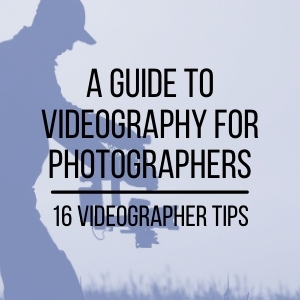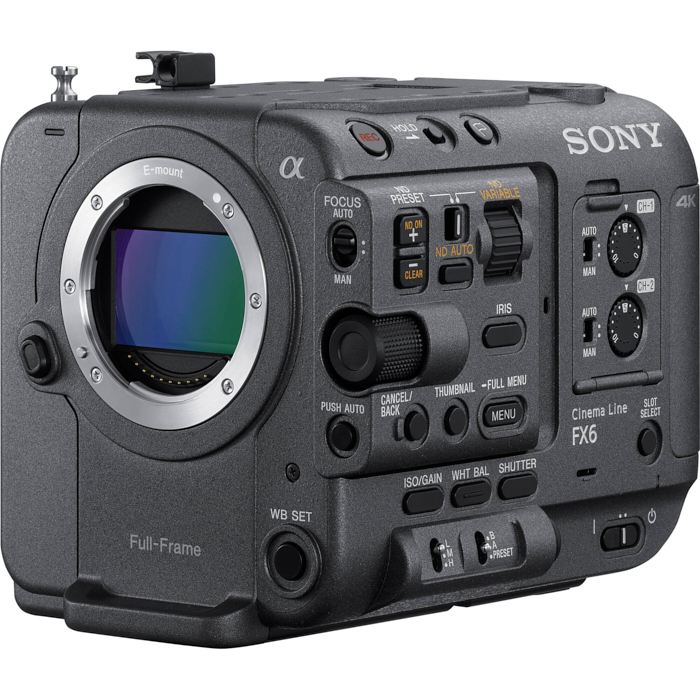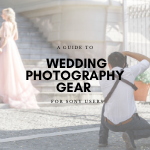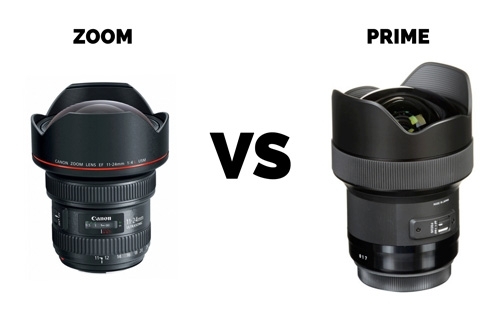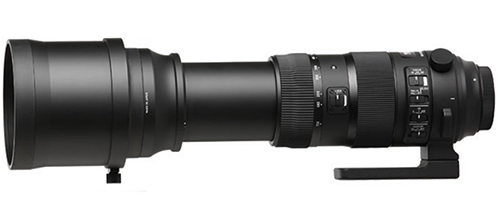Lens choice is a big deal when it comes to making an image.
Wide or telephoto? Expanded space or compressed space? Once landing on a choice there, you then have to ask yourself if you'll be looking for a particularly shallow depth of field, and therefore a particularly fast lens, or if you'll be stopping down to f/8 or f/11 for more depth of field. There are a lot of factors that go into lens choice, but one decision you'll inevitably have to make is whether to use a zoom, prime, or both.
The Case for Zoom Lenses
If you've used a zoom lens before then you know how crazy convenient they are. With a flick of the wrist you can change your subject's size in your frame. You have a selection of focal lengths at your fingertips, and thanks to modern day lens making technology, they probably all have pretty good image quality. Many pro photographer's camera bags are filled with zoom lenses exclusively. These lenses can offer fairly drastic changes in angle of view, allowing one lens to offer a large variety of shooting styles which can be extremely useful in a dynamic shooting situation.
If you’re shooting in a constantly changing environment, like a wedding, then zoom lenses are almost (I said almost) a requirement. The ability to get close and wide for a dynamic, exciting image and then quickly change with the environment to capture quiet, intimate moments from a distance. There’s also a clear advantage to carrying the equivalent of 4 lenses on your camera at once with one lens vs carrying one lens on the camera body and 3 more in a bag over your shoulder. This advantage can’t be overstated.
Speed is another major advantage to zoom lenses, not always in terms of aperture, but in terms of preparation. Switching quickly from telephoto to wide takes moments with a zoom lens, but might take several seconds when switching between prime lenses. This could potentially make the difference between nailing the shot and missing it entirely.
The case against Zoom Lenses
Zoom lenses are great, but they also come with a few drawbacks, (generally). For starters, zoom lenses tend to be on the heavy side thanks to all of the additional glass and the mechanisms that make them... well, zoom. Zoom lenses are also large for the same reasons. This size and weight can really make itself known when shooting all day or when being carried in a camera bag.
You’ll also notice some lenses with a variable aperture, sometimes even in the pricier pro range. These lenses have one effective aperture when zoomed to its widest point, but progressively smaller effective apertures as you zoom. That’s the f/x-f/x designation in the name of the lens. This of course requires a change in exposure to account for the loss of light which is particularly troublesome when shooting video.
Most pro-quality zoom lenses make all physical changes like focusing and zooming inside the barrel. Some, however, will physically move outside the barrel. This naturally exposes the lens to the outside world and opens it up to the elements, making it much more susceptible to moisture and grit which can wreak havoc on a lens.
Zoom lenses also have a reputation of being slightly less sharp when compared to prime lenses, all things being equal. This was especially true in the not-so-distant past of film photography. Compared with zooms, particularly on the less expensive side, you’re almost guaranteed to have better image quality from the prime.
The case for prime lenses
Prime lenses do a lot of things for photographers, not least of which is giving your arm a break. Lenses with a fixed focal length are often much lighter and typically smaller than zoom lenses since there are far fewer materials required for making a single focal length. That gives them a big advantage for long days of hauling gear around.
Primes also typically will have a much wider aperture than zoom lenses. Wide apertures are simply easier to design when you’re not making room for other mechanisms and pieces of glass for more focal lengths. This is a huge benefit and allows for lenses like the Sigma 14mm f/1.8 Art, an insanely fast prime wide angle that lets photographers shoot well into the evening and is nearly ideal for astrophotography. That wider aperture of course brings in more light, allowing you to not only shoot with less available light but also provides more depth of field control. Primes are often sought after for their pleasing “bokeh”, the quality of the out of focus regions in an image.
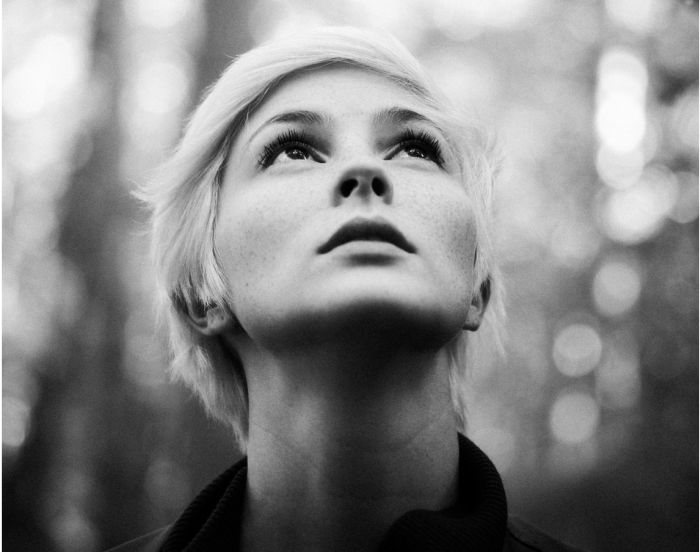
Price is another up side to prime lenses. While you can certainly spend a pretty penny on a fixed focal length lens, this is often due to extremely high quality construction, an intensely fast aperture, or mind numbingly stellar image quality. Even less expensive primes will often bring a crazy faster aperture. Most any “nifty fifty” will boast a speedy f/1.8 in a small, lightweight chassis.
Another benefit that tends to be less tangible is the change in behavior fixed focal length lenses inevitably force upon a photographer. Because you can’t change your perspective with a turn of the wrist, you’re forced to physically move to re-frame your subject. This is frequently referred to as “zooming with your feet” and is said to bring more engagement with your subject and get you out of your comfort zone.
The case against prime lenses
The obvious case against prime lenses is their inability to change focal length. A lens change requires a photographer to remove the lens on the camera body, pull a lens out of a bag, replace the lens on the body, and then place that lens back in the bag (or let an assistant do that, but then you have to have an assistant). This requires time that you may or may not have. This also means that your sensor is exposed to the elements more often since your camera body will be without any protection during a lens swap.
Also, at a certain point, the cost, size, and weight benefits of prime over zoom lenses starts to recede. At semi wide and normal focal lengths, that is 24 to ~85mm, primes will provide the aforementioned benefits of size and weight over their zoom counterparts (generally). However, on the telephoto side, the prime lens’ ability to provide a large maximum aperture begins to make telephoto lenses oversized and particularly heavy due to the large glass required to gather that much light. You get the light and subsequently faster shutter speeds, but at the cost of size and weight.
Because different focal lengths require different lenses, the weight savings of prime lenses over zoom lenses could be completely thrown out should you decide that you need several focal lengths. A 24-70mm f/2.8 zoom will likely be lighter than 24mm, 35mm, 50mm prime lenses combined, and those three lenses would certainly take up more space.
In the not-so-distant past prime lenses greatly skewed towards better image quality, however, modern day lens making technology has almost completely removed any advantage prime lenses had over zooms in this regard. Zoom lenses, particularly on the high end, will often perform as good as prime lenses. Even some budget zoom lenses perform exceptionally well when paired with the right sensor.
The Brass Tacks
Whether you choose a zoom or a prime lens depends on your subject matter as well as your shooting style. If you’ve decided that you need roughly the angle of view that a 24mm focal length would give you to make a successful image, you’ll need to choose between the flexibility of being able to change focal lengths in an instant like you would with a 16-35mm, or committing to that 24mm focal length and using a prime with a fast aperture and excellent image quality. The beauty of renting is that you can do both.
Search our website to find the focal length you're looking for and decide if you need the image quality, weight savings, and fast aperture of a prime lens, or the flexibility and convenience of a zoom lens. Not sure what's best for your shoot? Just ask us!


